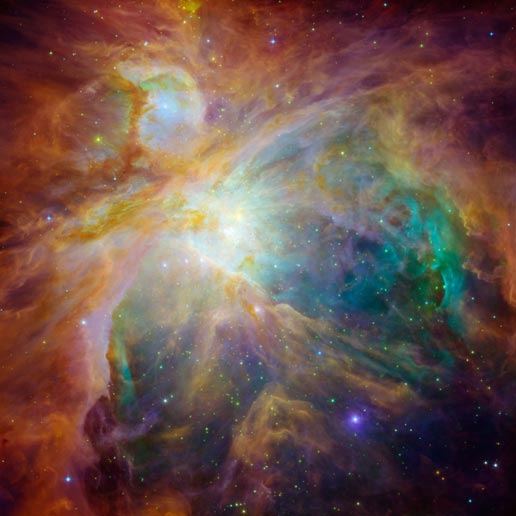For the Northern Hemisphere
January 20 - February 18, 2011
Night Sky Visitors ...
After reaching a decade milestone of producing the Night Sky pages online, I received an intuitive message to take a one-year sabbatical in 2011. This is a time to rest and recuperate, study more about the heavens, spend time with friends and increase my income.
In this abbreviated edition of Aquarius Night Sky, I offer the following to keep you looking up and tuned to the wonders above.
Clear skies,
Susan Sun
Look Up!![]()
Planetary Treats
Universe Today ... Search for any planet; learn the latest!
Star Gazer's Show Scripts highlight planets in the night sky.
Celestial Delights
Orion Gives Birth ~ His Babies Are Artists!
Plus ...
Sky Lights
Sky Calendars
Moon Dances 1/4-2/2
Moon Dances 2/2-3/4
The Night Sky ~ Home Page
Aquarius Navigation Page
Planetary Treats
This Section Is "On Sabbatical"
The
Planets![]()
Is it
a planet? ... What planet? When you look up at the night sky, how do you
know you are looking at a planet? What is a plutoid? Click
here!
[Return to Menu at top]
Celestial
Delights![]()
Orion Gives Birth ~ His Babies Are Artists!
Baby Stars Create a Masterpiece

Image: NASA / JPL–Caltech / STScI
This Spitzer/Hubble infrared and visible-light composite shows an artistic masterpiece of turbulent and chaotic energies that baby stars are creating 1,500 light years away in the Orion Nebula. Four monstrously massive stars, collectively known as the Trapezium located at the center of this cosmic cloud may be the main culprits of this gorgeous chaos. "These behemoths are approximately 100,000 times brighter than our sun." JPL
[This] image from NASA’s Spitzer and Hubble Space Telescopes looks more like an abstract painting than a cosmic snapshot. … It was "painted" by hundreds of baby stars on a canvas of gas and dust, with intense ultraviolet light and strong stellar winds as brushes. NASA's Full Caption / Description
The
Splendor of Orion: A Star Factory Unveiled
SPACE.com’s informative account of the current science
relating to the Orion Nebula and its Grand Nebula replacement.
The Orion Nebula is the nearest star formation region to the Earth and consequently particularly well studied. Despite this, star formation is not all that well understood. astro.nineplanets.org
Hubble's Top 10 Space Photos
Read the story behind the 2006 choices.
Orion the Hunter gives birth to stars! More than half of the 25 brightest stars appear overhead in the winter sky making it the brightest night sky of all the seasons. Well, here's the reason why these bright stars are in the winter sky.
It is no coincidence that the brightest stars congregate here [the winter sky], for this is where many stellar nurseries reside, including the marvelous Orion Nebula (M42). Massive stars begin their lives in such cocoons and burn most brightly. Scan this region with binoculars to see one marvel after another. Astronomy Magazine 2/03
The Orion Nebula (M42) is easily visible as a fuzzy star with the unaided eye. Here's a fun quote about its location and size that will expand your horizons:
Everyone loves Orion's bright stars but it is one of his dimmer stars that will blow you away. Face southeast in the early evening and below Orion's three belt stars you'll see three dimmer stars which make up his sword. But no matter how sharp your eyesight the middle star always seems to look fuzzy, out of focus. [Image] That's because it isn't a star at all but a humongous cosmic cloud of gas and dust where new stars are being born. We call it the Orion Nebula and there is enough material here to produce over ten thousand stars the size of our Sun. Indeed, this nebula is so huge we could line up 20,000 of our solar systems end to end from one edge of it to the other. How's that for a fuzzy little star? Star Gazer
Find
Orion's Valentine's Star!
It's red, beats like a giant heart
and stimulates our heart.
Happy
Valentine's Day!
May
the Love Light in Your Heart
Expand to Include All.
Look Up … Be Dazzled!
[Return to Menu at top]
Sky Lights ~ Aquarius
January 20 - February 18, 2011
The Pleiades star cluster lies above and to the right (northwest) of the bright red star, Aldebaran, the eye of Taurus the Bull. Look overhead in the early evening (west in the later evening) to find reddish Aldebaran and the mini dipper-shaped sparkling Pleiades, the Bull's shoulder. Winter Stars
Capella is the very bright star overhead and northeast of the Pleiades. It is the brightest star seen the most often. It lies in the constellation Auriga, our celestial Santa. Winter Stars
Orion The Hunter, the cosmic giant, lies overhead between 8pm – 9pm. Navigating with Orion introduces you to the winter stars. Use his belt stars to locate Sirius and Aldebaran, Betelgeuse and Rigel. Notice the colors of these 4 stars. The three belt stars of Orion represent the Three Wise Men. Orion helps one find the Winter Triangle, the Great Winter Hexagon and the Valentine's Star!
Sirius the brightest star in the heavens can be seen in the southeast at sunset. In the beginning of Aquarius, Sirius sets in the southwest about 3:45am and at its end around 2:00am. Winter Stars
Arcturus, a bright golden star, rises in the northeast in the beginning of Aquarius about 11:00pm and by its end around 9:30pm. Use the handle of the Big Dipper to arc down to Arcturus from there spike down to blue-white Spica in the south! Helpful Image In 2011 Saturn lies west of Spica. Look for the large elongated triangle formed by yellowish Saturn, bluish Spica and golden Arcturus. Binoculars highlight their colors.
![]()
I'd like to know your thoughts about The Night Sky ...
send me an email.
May your Night Sky traveling always be filled
with Celestial Delights and Treats!
Susan Sun
Getting
Started in Astronomy
Includes a downloadable Moon map and bimonthly star charts.
At Skymaps.com download a current monthly guide, evening sky map & calendar.
Link to Sky and Telescope's This Week's Sky at a Glance.
Spaceweather.com keeps you looking up!
Online
Schools
A space and science study guide for kids
[Return to Menu at top]
|
Thank You for Your Heartfelt |
The
Night Sky
The Planets
Night Sky Glossary
Aquarius Navigation Page
12 Zodiacal Deities
Choosing
a Telescope
Candlemas
Cosmology
~ Highlights
Legendary Journeys of
Hercules
Earthly Delights
Cosmology
Linkups~SouledOut.org's
Recommended Links
Glossary of Esoteric Terms & Phrases
SouledOut.org Site Map
SouledOut.org Home

